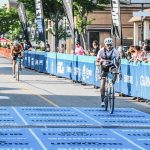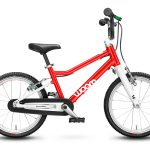Averages make you average
SECRET #5 – Focusing on averages (power, speed, TSS) make you average.
That’s right Folks. Stop focusing on averages. Whether that’s average power, average cadence, average speed, average weekly distance, and average TSS (training stress score). These metrics are best used like words in a language; for communication. You use them to guide yourself to executing an intended exercise or activity. Or you can use them to define a planned workout or event.
When you focus on the averages of these metrics, well, you tend to try and game the system. This usually looks like riding above your intentions to improve the average score.
When you focus on averages, you stop focusing on the things that matter. As a coach when I make an interval or workout, I am putting in concepts. They’re certain zones I want you to work in. Specific neuromuscular connections you need to make. If you are focused just on the average, you might as well just throw all the things that make an interval out the window.
For example, a super simple interval might be 10 minutes at your medium or Zone 3 power. I want you to do your Zone 3 which is 200 watts. I want you to do it for a duration of 10 minutes with a cadence of 100 rpm. In this interval, I’m asking you to do this low power maintaining a high cadence without spiking the power.
It’s a specific zone. In this case, it’s the highest amount of power output you can use burning fat as fuel. When I give you that interval, I’m working on the low-end zone and cadence control creating neuromuscular pathways that will help with inefficiencies in your pedal stroke.
You might finish the interval with an average power of 200 watts but when your power graph looks like an EKG, spiking and dropping but you averaged 200 watts, so you aced the interval. Right?
Sorry, but I looked at your graph. I saw you did time at 150 watts zone and 250 watts zone. These are entirely different zones. That requires different muscle recruitment, different fuel sources, and neuromuscular connections. While the average for 200 might be spot on because you did not control the power you did not complete the task.
So if you are looking for averages, you’ve passed, but we are looking for specific growth in specific areas.
Averages often encourage athletes to do too much work by accumulating fatigue. They even have a measure for this TSS. Training Stress Score (TSS) is a composite number that averages the duration and intensity of a workout to arrive at an estimate of the overall training load and physiological stress created by that particular ride.
I have a term for the athlete who loves to game the metric averages: “The Fatigue Millionaire.” Yes, the fatigue millionaire loves to go around and knock out the big averages in watts, speed, weekly distance, and my favorite (straight, pure fatigue) TSS. They collect this fatigue in their fatigue bank account and then wait for the right time to cash it all in. “Yes sir, I have an important race coming up, and I’d like to cash in all my fatigue now for race winning fitness. Sounds ridiculous? Well, it is! Unfortunately, this is how most people believe training is done, and it just doesn’t work. It’s a sloppy way for coaches to coach. It’s rooted in the very basics of exercise 101. Which is to create a bunch of strain on your body and hope something happens.
When you become a fatigue millionaire, there’s no direction. Sure, maybe you’re growing in your ability to overtrain. But you aren’t becoming more efficient. You are just putting your body under stress and will have to pay the bill later in the form of injuries or burnout.
Focusing on averages encourages athletes to push yourself in between intervals in hopes of banking lots of TSS and Kilojoules for average power. But the worst offender of average speed. I hear it all the time, “yeah it was a pretty good ride, “21 average” or they use it to describe themselves, “I average about 17 miles an hour.”
I have no problem with people looking at averages post ride or race, but only for fun. Looking at the averages during the ride typically encourages athletes to go too hard between intervals. There should be a clear separation between intervals. I often see athletes blending it all together to increase your average speed. If you’re worried about this, you most likely lack quality and intensity in the top end intervals you should be doing.
Step away from averages and step into a calculated and cutthroat approach to maximizing time and energy investments on the bike.





